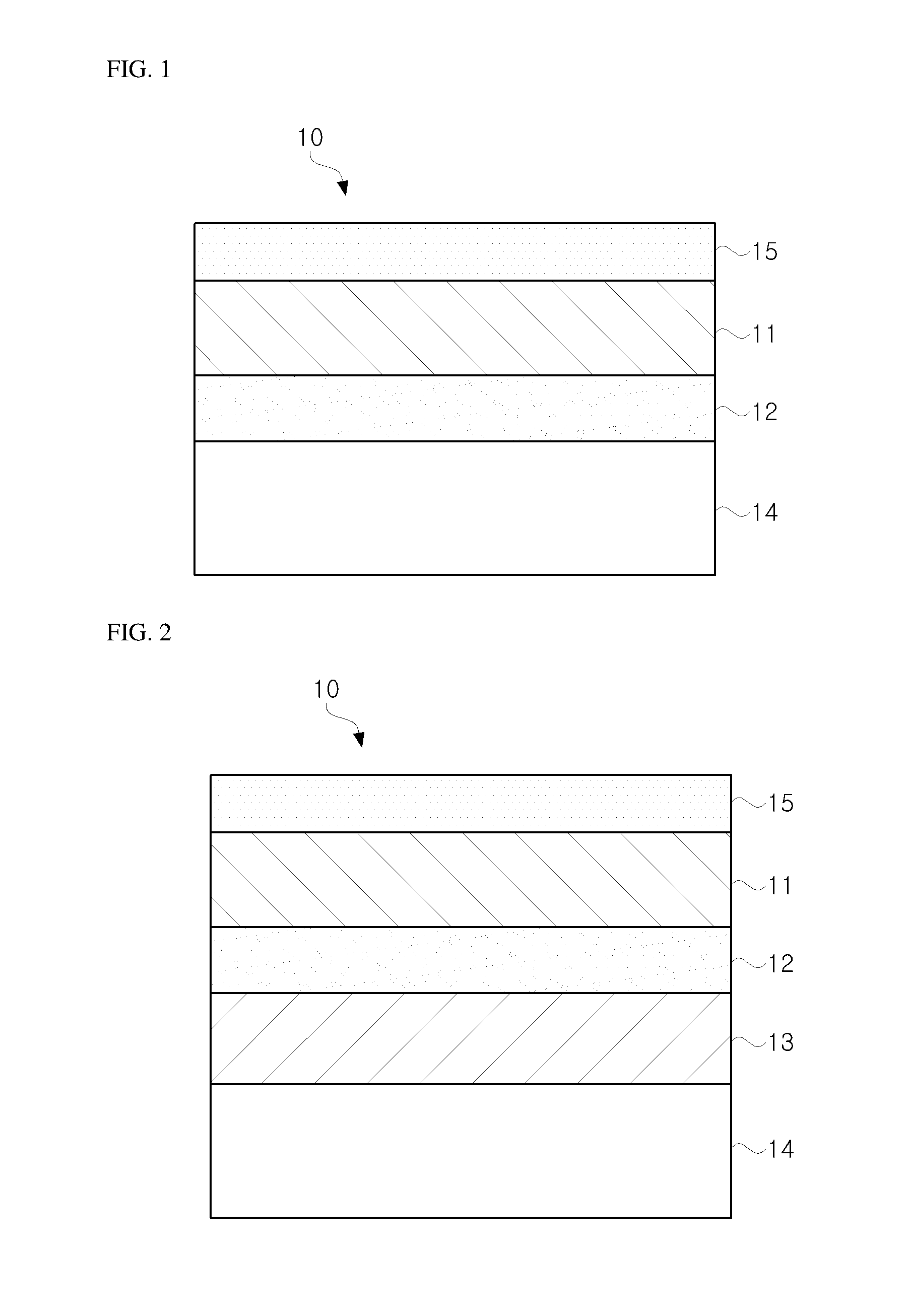Barrier film and method for manufacturing same
- Summary
- Abstract
- Description
- Claims
- Application Information
AI Technical Summary
Benefits of technology
Problems solved by technology
Method used
Image
Examples
example 1
[0070]On a COP film (thickness 50 μm, refractive index 1.53) as a substrate layer, a coating solution comprising acrylic resin and metal oxide nanoparticles (TYT60, Toyoink Co.) was used to form a first dielectric layer having a refractive index of 1.60 to a thickness of 220 nm. On the coated film, zinc-tin oxide was laminated by sputtering as an inorganic layer having a thickness of about 19 nm and a refractive index of 2.0. On this laminated layer, by using the same coating solution, a second dielectric layer was formed to a thickness of 220 nm and, on this second dielectric layer, a resin layer having a refractive index of 1.52 and a thickness of 50 μm (LBPSA-LX150, LG Chemical Inc.) was laminated, to produce a barrier film.
[0071]EXAMPLE 2
[0072]A barrier film was prepared by the method described in Example 1 except that a first dielectric layer and a second dielectric layer were prepared to have a thickness of 90 nm.
example 3
[0075]On a COP film (thickness 50 μm, refractive index 1.53) as a substrate layer, a first dielectric layer having a refractive index of 1.65 was formed to a thickness of 220 nm by using a coating solution comprising acrylic resin and metal oxide nanoparticles (TYT65, Toyoink Co.). On the coated film, zinc-tin oxide was laminated by sputtering as an inorganic layer having a thickness of about 19 nm and a refractive index of 2.0. On this laminated layer, a second dielectric layer was formed to a thickness of 220 nm and having a refractive index of 1.48 by heat-curing a coating solution formulated with pentaerythritol triacrylate and methylethoxy silane at a ratio of 40:60, and on the second dielectric layer, a resin layer having a refractive index of 1.52 and a thickness of 50 μm (LBPSA-LX150, Lg Chemical) was laminated, to produce a barrier film.
example 4
[0076]A barrier film was prepared by the method described in Example 3 except that a first dielectric layer having a refractive index of 1.48 was formed by heat-curing a coating solution formulated with pentaerythritol triacrylate and methylethoxy silane at a ratio of 40:60, and a second dielectric layer having a refractive index of 1.65 was formed by using a coating solution comprising acrylic resin and metal oxide nanoparticles (TYT65, Toyoink Co.).
PUM
| Property | Measurement | Unit |
|---|---|---|
| Thickness | aaaaa | aaaaa |
| Nanoscale particle size | aaaaa | aaaaa |
| Nanoscale particle size | aaaaa | aaaaa |
Abstract
Description
Claims
Application Information
 Login to View More
Login to View More - R&D
- Intellectual Property
- Life Sciences
- Materials
- Tech Scout
- Unparalleled Data Quality
- Higher Quality Content
- 60% Fewer Hallucinations
Browse by: Latest US Patents, China's latest patents, Technical Efficacy Thesaurus, Application Domain, Technology Topic, Popular Technical Reports.
© 2025 PatSnap. All rights reserved.Legal|Privacy policy|Modern Slavery Act Transparency Statement|Sitemap|About US| Contact US: help@patsnap.com



